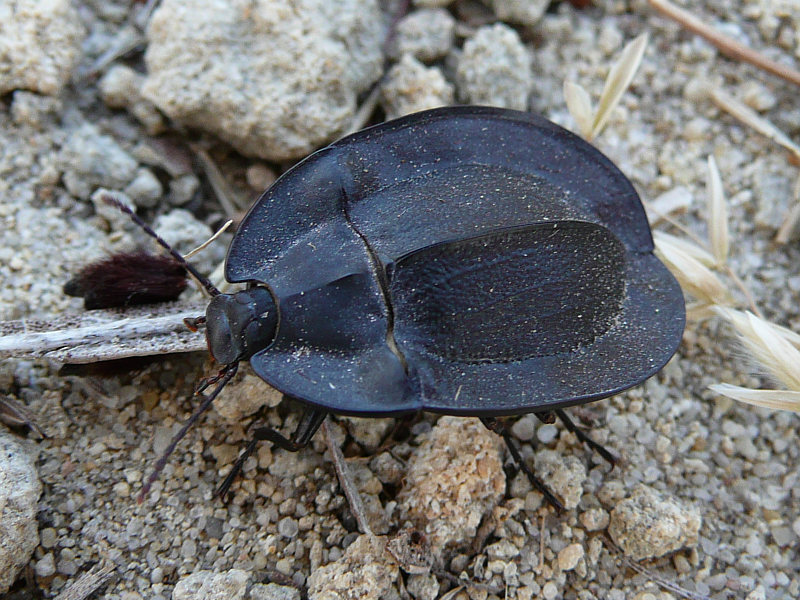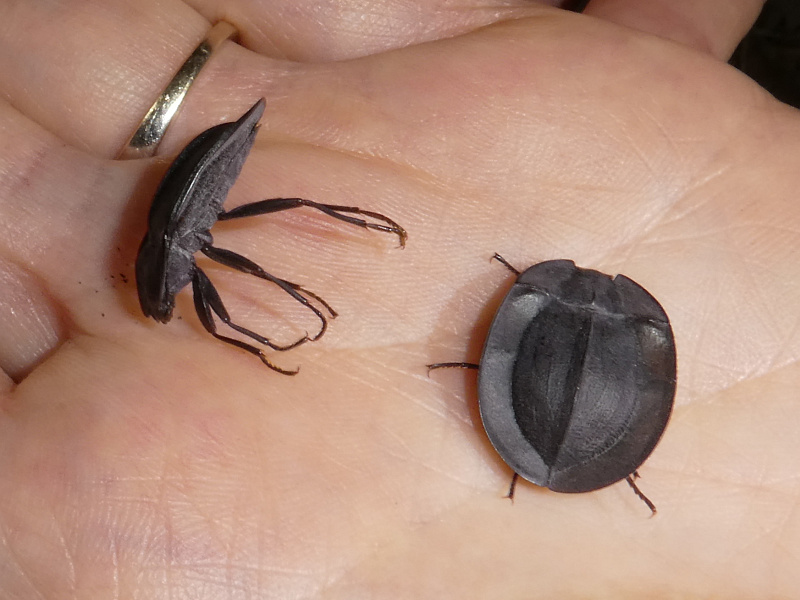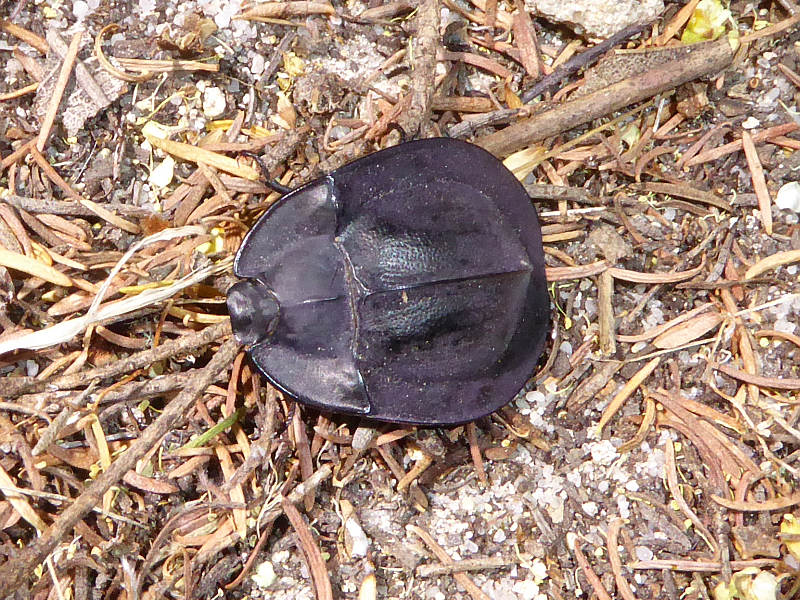Pterohelaeus sp. 1Common name: Pie-dish Beetle
Distribution: Unknown.
Description: This dark blue/black, nocturnal beetle is approximately 20 millimetres long.
Notes: The wing covers are fused down the insect’s back to provide a solid, protective cover. The flanges stopping each side of the beetle’s head is the feature that differentiates the Pterohelaeus genus from Helea.
Pie-dish beetles feed on dead and decaying plant material.
Pie-dish beetles lay their eggs in moist soil during summer and autumn, usually under clumps of rotting plant material, under which adults often shelter. Females of some species can lay up to 1,000 eggs during their life spans. The rate of egg production appears to be related to temperature. So is the time of hatching, which ranges from seven to fourteen days after the eggs were laid.
After hatching, the larvae can be found in loose clusters on the top of moist soil, dispersing as they develop. When fully grown, they burrow deeper into wetter soil where they build a circular pupal chamber and change into pupae. One to three weeks later, the adults emerge. At first they are soft and light brown, but they harden after about a week and the body becomes dark brown or black, the colour depending on the species. Soon after emergence, mating occurs and eggs develop three or four weeks later. Adult pie-dish beetles can be relatively long-lived (up to a year).
We have photographed it in November, December and January.
References: Esperance Blog http://natureitems.blogspot.com.au/2007/02/21-helea-species-from-se-of-wa.html
Australian Museum http://australianmuseum.net.au/Pie-dish-Beetles






